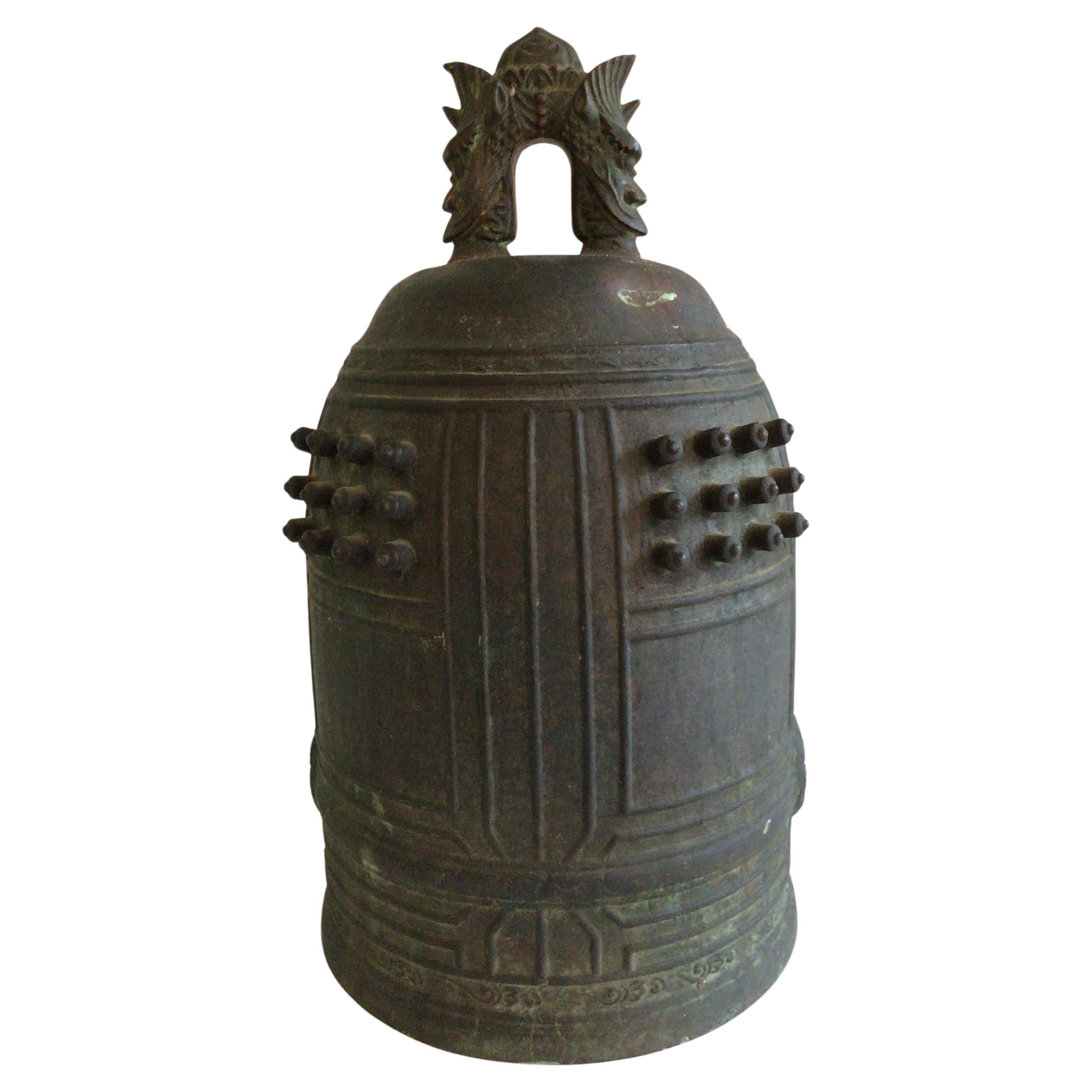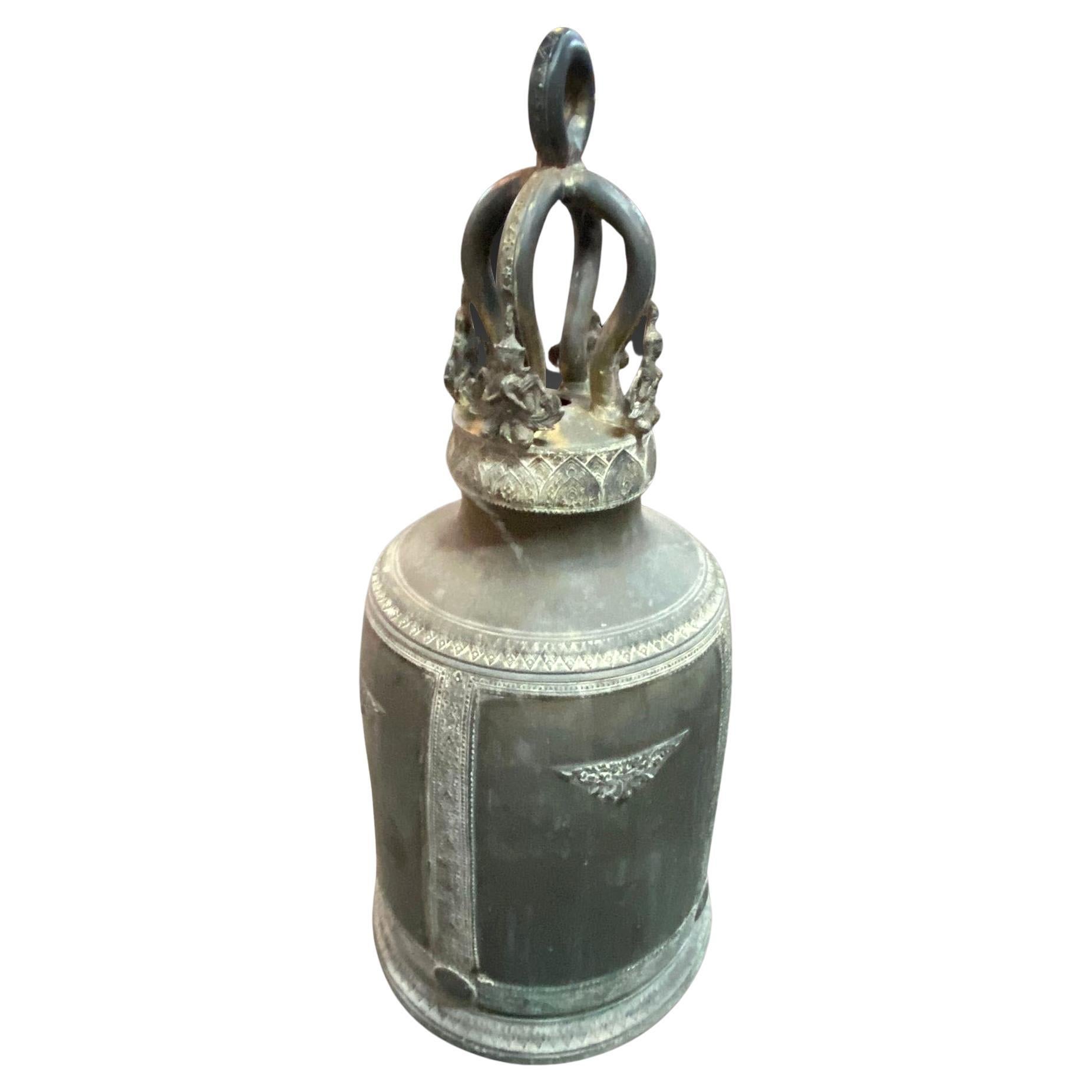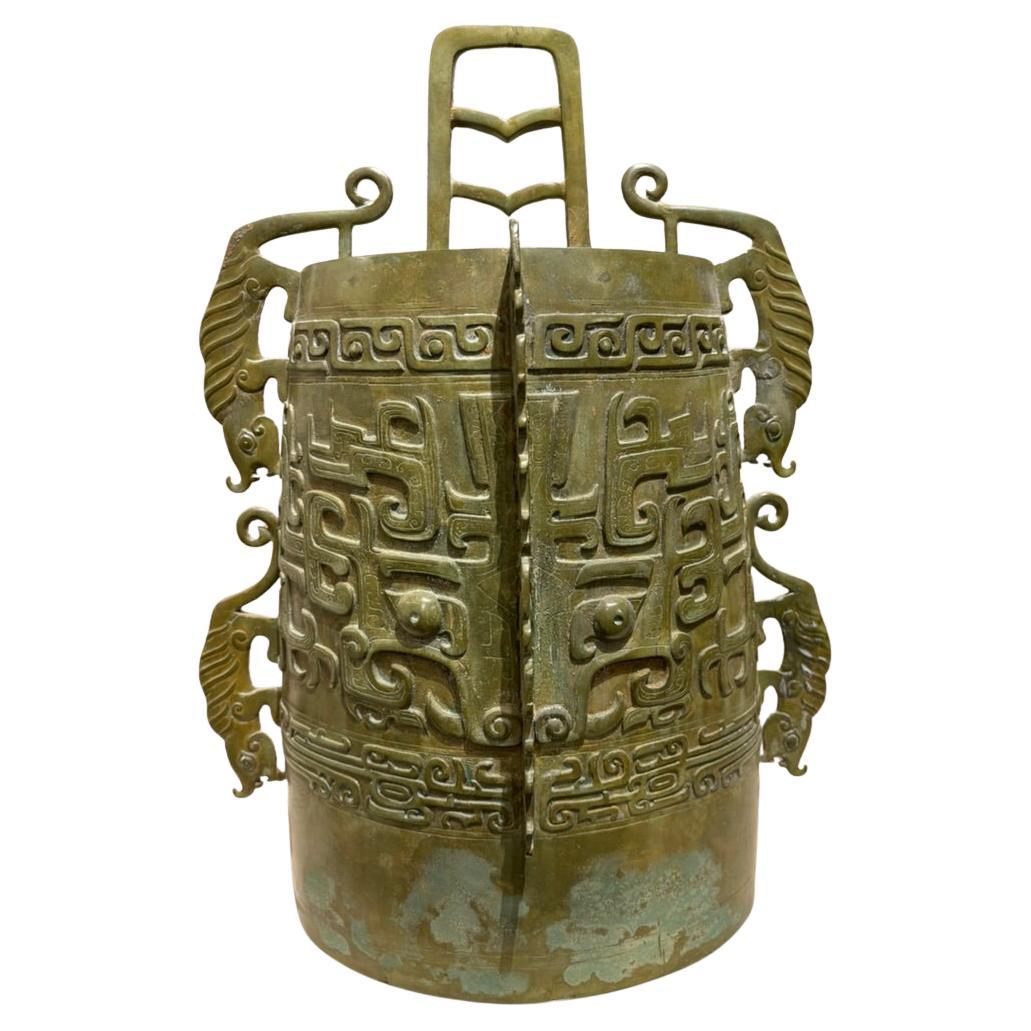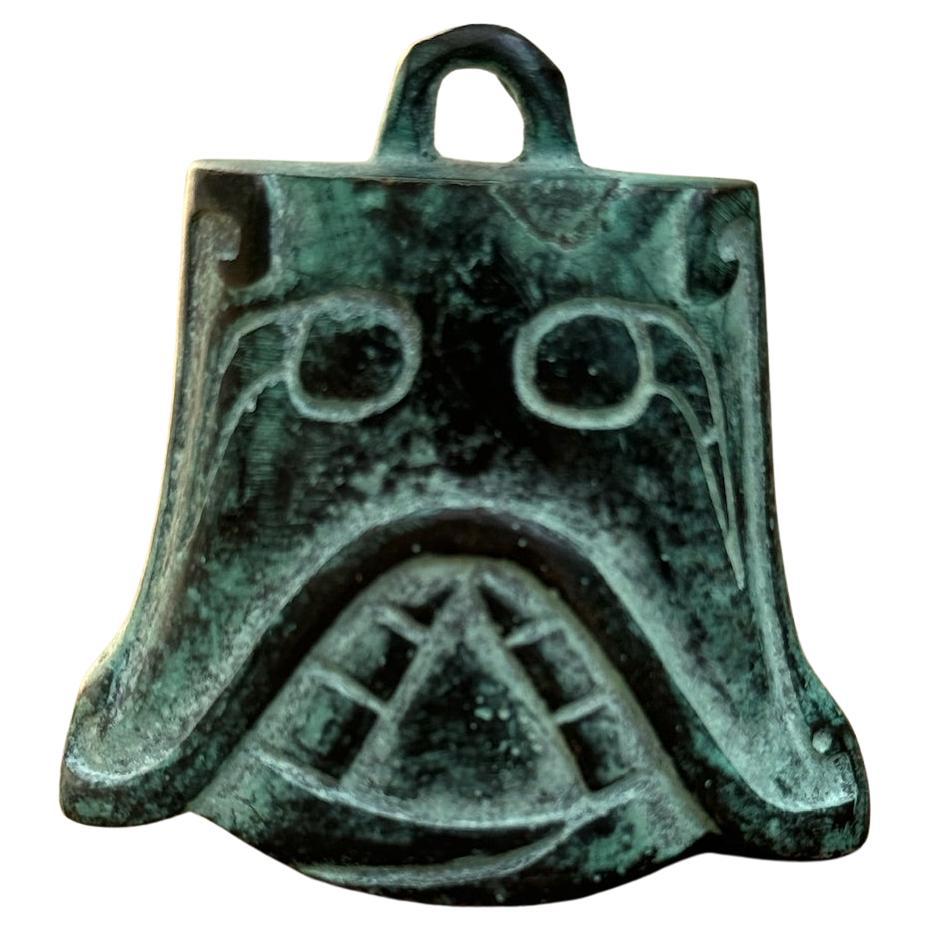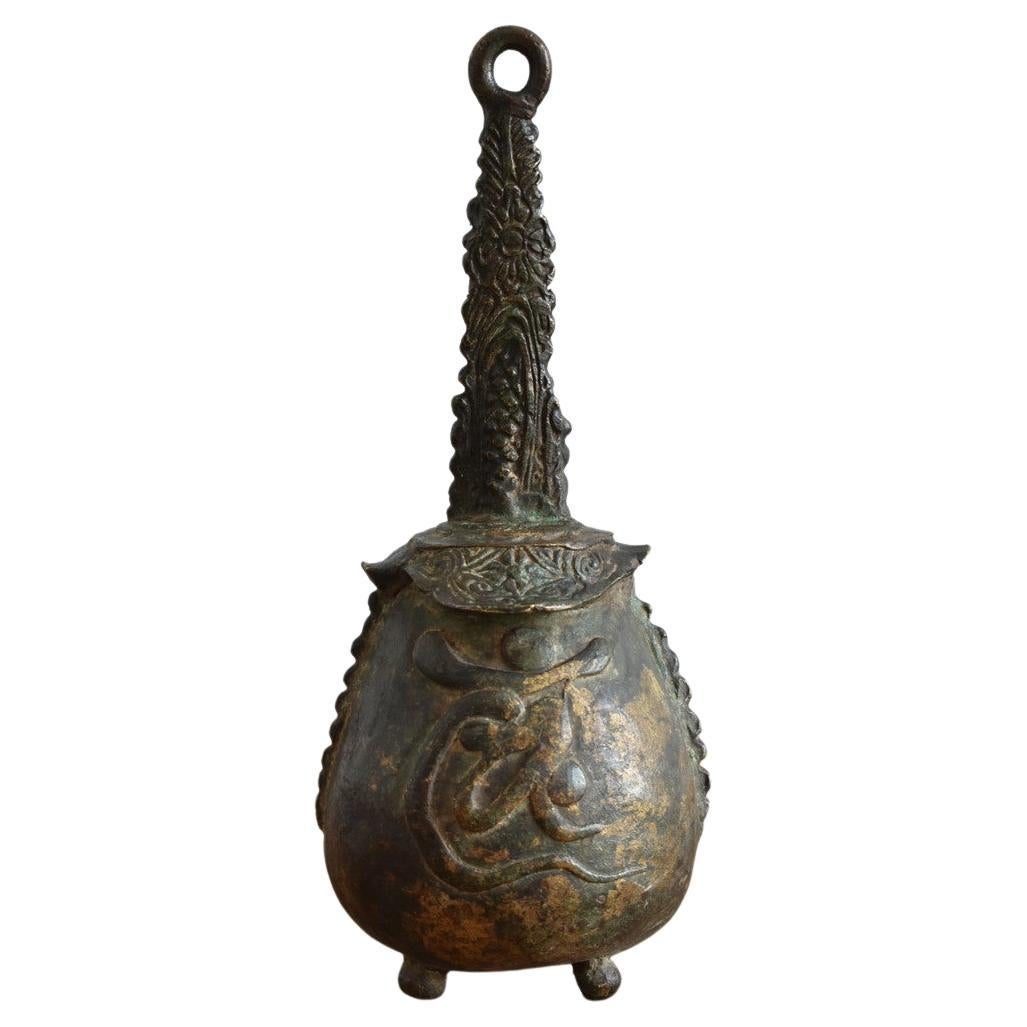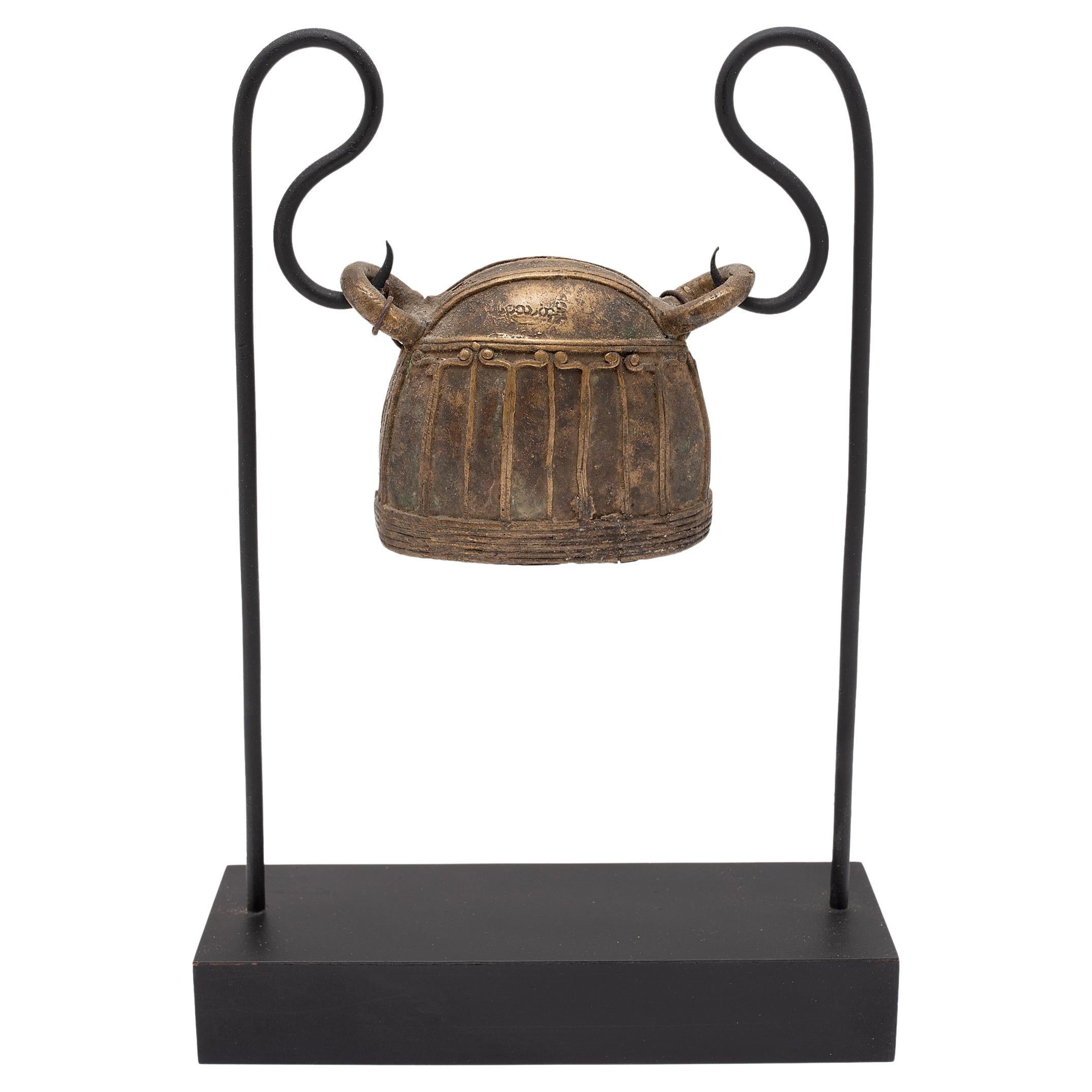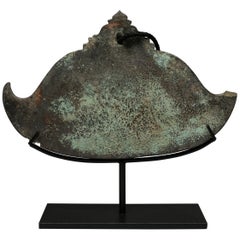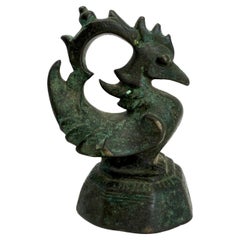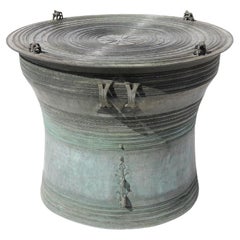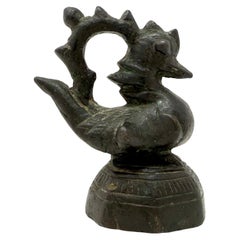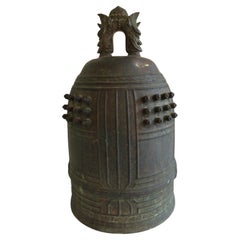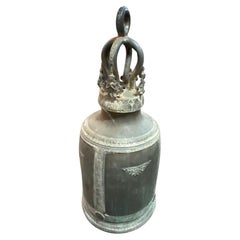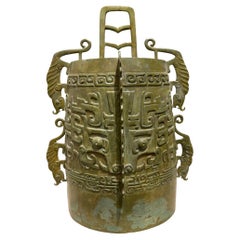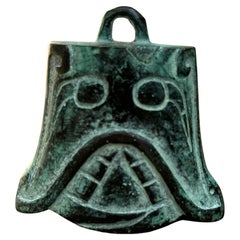Items Similar to Chinese Ming Dynasty Bronze Luan Chariot Bell
Want more images or videos?
Request additional images or videos from the seller
1 of 6
Chinese Ming Dynasty Bronze Luan Chariot Bell
$850
£644.96
€737.45
CA$1,187.22
A$1,320.03
CHF 689.25
MX$16,067.94
NOK 8,794.47
SEK 8,239.99
DKK 5,503.76
Shipping
Retrieving quote...The 1stDibs Promise:
Authenticity Guarantee,
Money-Back Guarantee,
24-Hour Cancellation
About the Item
Cast with a globular top with a central aperture on both sides, pierced with radiating petals to one side, supported on a tall spreading foot of rectangular section cast with raised geometric designs and apertures on all four sides.
In ancient China, the first horse-drawn chariots were used for daily activities, hunting, and combat. While most wooden components decayed over time, bronze fittings, bridle pieces and other ornaments survived to offer evidence of the chariot’s important role. Luxurious chariots, which belonged exclusively to nobles and members of the royal family, were drawn by four horses and decorated with metal and paint. The bells would have been attached to the yoke or drawbar on a horse-drawn chariot. They were displayed in sets to indicate social status – two, four, six or eight bells – the higher the number of bells, the higher the social status of the passenger.
- Dimensions:Height: 6.5 in (16.51 cm)Width: 3.5 in (8.89 cm)Depth: 1.5 in (3.81 cm)
- Style:Medieval (Of the Period)
- Materials and Techniques:Bronze,Cast
- Place of Origin:
- Period:
- Date of Manufacture:15th century or ealier
- Condition:Wear consistent with age and use.
- Seller Location:Point Richmond, CA
- Reference Number:Seller: GU2521stDibs: LU1778242658232
About the Seller
5.0
Platinum Seller
Premium sellers with a 4.7+ rating and 24-hour response times
Established in 1999
1stDibs seller since 2015
686 sales on 1stDibs
Typical response time: 2 hours
- ShippingRetrieving quote...Shipping from: Point Richmond, CA
- Return Policy
Authenticity Guarantee
In the unlikely event there’s an issue with an item’s authenticity, contact us within 1 year for a full refund. DetailsMoney-Back Guarantee
If your item is not as described, is damaged in transit, or does not arrive, contact us within 7 days for a full refund. Details24-Hour Cancellation
You have a 24-hour grace period in which to reconsider your purchase, with no questions asked.Vetted Professional Sellers
Our world-class sellers must adhere to strict standards for service and quality, maintaining the integrity of our listings.Price-Match Guarantee
If you find that a seller listed the same item for a lower price elsewhere, we’ll match it.Trusted Global Delivery
Our best-in-class carrier network provides specialized shipping options worldwide, including custom delivery.More From This Seller
View AllSpinning Temple Gong, Mandalay, Burma, Early 20th Century
Located in Point Richmond, CA
Burmese spinning temple gong (Kyizi) from Mandalay, Burma, early 20th century.
Made of cast bronze in the shape of a temple pagoda with fine green patina.
Category
Early 20th Century Burmese More Asian Art, Objects and Furniture
Materials
Bronze
$800 Sale Price
33% Off
Antique Burmese Karaweik 1 Viss Opium Weight
Located in Point Richmond, CA
Antique Burmese 1 viss A-le, a zoomorphic form bronze market weight often referred to as an “opium weight”, in the form of a Karaweik, a Burmese crane with pointed beak, bulging ey...
Category
Antique Late 19th Century Burmese Other Metalwork
Materials
Bronze
Antique Burmese Bronze 2-Frog Rain Drum
Located in Point Richmond, CA
A fine bronze tribute drum (Heger Type III), Pazi (Burmese), pam klo’ (Karen). This unique lost wax casting of a drum is ornamented with 8 frogs with bulging eyes placed in stacks o...
Category
Antique Mid-19th Century Burmese Tribal Metalwork
Materials
Bronze
Antique Burmese Karaweik 50 Tical Bronze Market Weight
Located in Point Richmond, CA
Antique Burmese 50 tical A-le, a zoomorphic form bronze market weight often referred to as an “opium weight”, in the form of a Karaweik, a Burmese crane with pointed beak and bulging...
Category
Early 20th Century Burmese Other Metalwork
Materials
Bronze
20th Century Abstract Iron Sculpture, Japan
Located in Point Richmond, CA
20th Century Hollow Abstract Iron Sculpture, Japan
This heavy hollow iron sculpture by an unknown Japanese metalsmith is a knockout from every angle. It measure 9 inches high by 9 i...
Category
Mid-20th Century Japanese Japonisme Sculptures and Carvings
Materials
Iron
Japanese bronze image of Tanjo no Shaka
Located in Point Richmond, CA
Japanese bronze image of Tanjo no Shaka, the infant Buddha (Shakyamuni), a standing figure with the right hand pointing towards heaven and the left hand pointing toward earth, costum...
Category
Antique 1850s Japanese Edo Metalwork
Materials
Bronze
You May Also Like
19th Century Bronze Temple Bell
Located in Tarrytown, NY
This 19th C. Japanese Buddhist bronze temple or monastery bell, features a stylized two-headed dragon loop handle at top, four studded panels at shoulde...
Category
Antique 19th Century Tibetan Antiquities
Materials
Bronze
Bronze Bell, India, 20th Century
Located in Madrid, ES
Bronze bell. India, 20th century.
Bell made of bronze with a tall body and an oval base, almost rectangular in height, which has an elaborate upper part with smooth areas and figure...
Category
20th Century Indian Other Metalwork
Materials
Bronze
Chinese Archaistic Bronze Ritual Bell, Zhou Dynasty Style, Verdigris Patina
Located in Stamford, CT
Chinese Archaistic bronze ritual bell with raised stylize tigers on the sides, a Taotie mask on front and back, incised and relief geometric decoration. With a wonderful olive green ...
Category
Early 20th Century Metalwork
Materials
Bronze
Shang Dynasty Bronze Bell
Located in West Hollywood, CA
The Shang Dynasty Bronze Bell is an ancient artifact, intricately engraved with mask designs that reflect the artistry and cultural significance o...
Category
Antique 15th Century and Earlier Chinese Antiquities
Materials
Bronze
Chinese Antique Casting Handbell Made of Copper Alloy / Temple Bell
Located in Sammu-shi, Chiba
A Chinese antique handbell made of copper alloy.
I think it is from the late Qing dynasty to the end of the Qing dynasty.
Although it is a casting, ...
Category
Antique 19th Century Chinese Qing Metalwork
Materials
Brass, Bronze
Burmese Bronze Hka-Lauk Bell, C. 1850
Located in Chicago, IL
This large Burmese bell is known as hka-lauk and was used to track the movement of a livestock animal, strung from a collar by the two loops at the top. Dat...
Category
Antique Mid-19th Century Burmese Metalwork
Materials
Bronze, Steel
